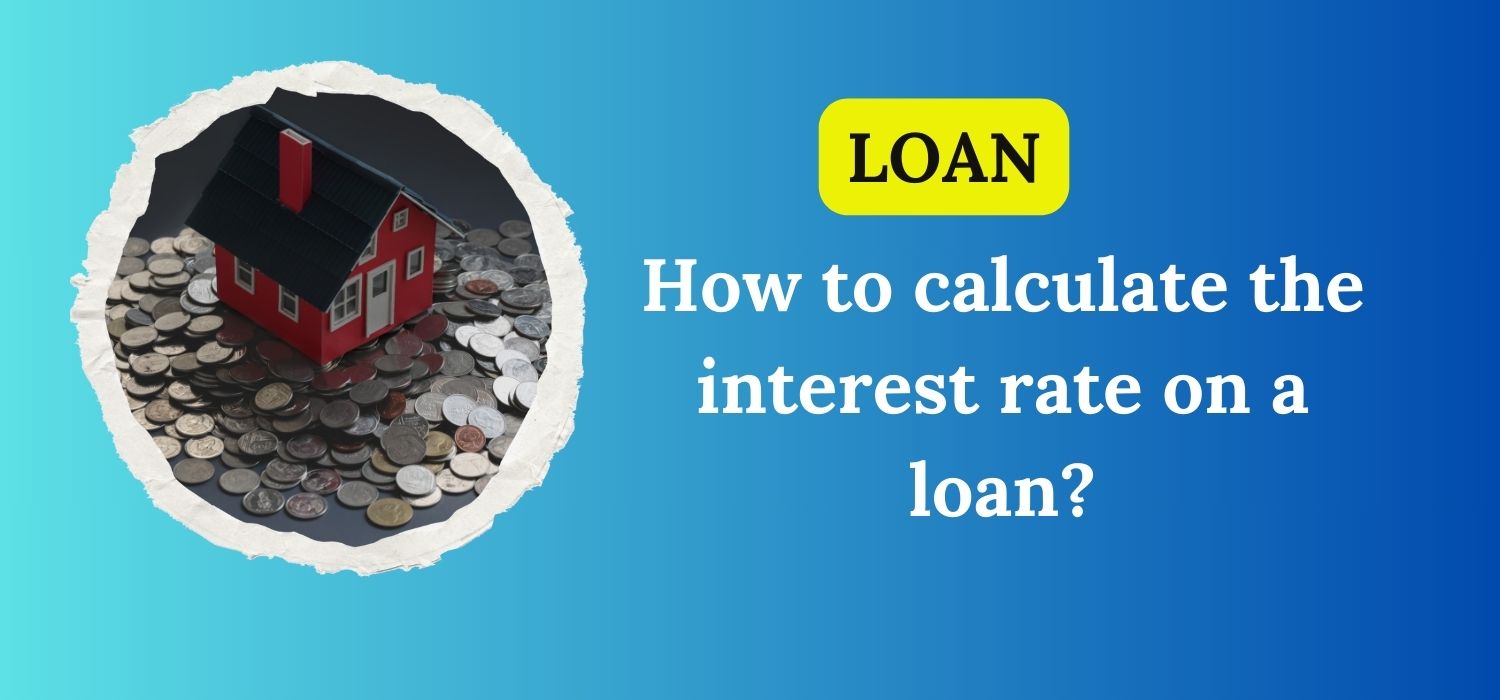Understanding how to calculate the interest rate on a loan is crucial for making informed financial decisions. Whether you’re taking out a mortgage, a car loan, or a personal loan, knowing how to compute the interest can help you plan your finances better and avoid potential pitfalls. In this guide, we will break down the steps to calculate the interest rate on a loan, explain the different types of interest rates, and provide practical examples to illustrate the process.
Types of Interest Rates
Before we dive into the calculations, it’s essential to understand the different types of interest rates you might encounter:
- Simple Interest Rate: This is the most straightforward form of interest calculation. It’s calculated on the principal amount only.
- Compound Interest Rate: This interest is calculated on the principal amount and also on the accumulated interest of previous periods.
- Fixed Interest Rate: The interest rate remains constant throughout the loan period.
- Variable Interest Rate: The interest rate can change over time based on market conditions.
Simple Interest Calculation
Simple interest is calculated using the following formula:
Simple Interest=P×R×T\text{Simple Interest} = P \times R \times T
Where:
- PP is the principal amount (the initial amount of the loan).
- RR is the annual interest rate (expressed as a decimal).
- TT is the time the money is borrowed for, in years.
Example:
If you borrow $10,000 at an annual interest rate of 5% for 3 years, the simple interest would be:
Simple Interest=10,000×0.05×3=1,500\text{Simple Interest} = 10,000 \times 0.05 \times 3 = 1,500
So, the total interest paid over 3 years is $1,500.
Compound Interest Calculation
Compound interest is calculated using the following formula:
A=P(1+Rn)nTA = P \left(1 + \frac{R}{n}\right)^{nT}
Where:
- AA is the amount of money accumulated after nn years, including interest.
- PP is the principal amount.
- RR is the annual interest rate (expressed as a decimal).
- nn is the number of times that interest is compounded per year.
- TT is the time the money is borrowed for, in years.
Example:
If you borrow $10,000 at an annual interest rate of 5%, compounded annually for 3 years, the compound interest would be:
A=10,000(1+0.051)1×3=10,000(1.05)3=11,576.25A = 10,000 \left(1 + \frac{0.05}{1}\right)^{1 \times 3} = 10,000 \left(1.05\right)^3 = 11,576.25
So, the total amount paid after 3 years is $11,576.25, and the compound interest is $1,576.25.
Fixed vs. Variable Interest Rates
- Fixed Interest Rate: Suppose you take a loan of $10,000 with a fixed annual interest rate of 5% for 5 years. The interest calculation remains the same throughout the loan period, providing predictability in your payments.
- Variable Interest Rate: If you take a loan with a variable interest rate, the interest can fluctuate over the loan period based on the prime rate or other benchmarks. This means your payments could increase or decrease, making budgeting a bit more challenging.
Practical Steps to Calculate Interest Rate on a Loan
- Determine the Loan Amount (Principal): Identify the principal amount of the loan. For instance, $10,000.
- Identify the Interest Rate: Determine whether the interest rate is simple or compound, fixed or variable.
- Determine the Loan Term: Establish the period for which the loan is taken, for example, 5 years.
- Apply the Formula: Use the appropriate formula based on the type of interest rate.
How to apply a personal loan?
Applying for a personal loan can be a straightforward process, but it requires careful planning and consideration. Personal loans can be used for various purposes, such as consolidating debt, financing a major purchase, or covering unexpected expenses. Here’s a comprehensive guide to help you navigate the application process.
Step 1: Assess Your Financial Needs
Before applying for a personal loan, determine how much money you need and the purpose of the loan. Consider the following:
- Loan Amount: Calculate the exact amount you need to borrow. Avoid borrowing more than necessary, as this will increase your repayment burden.
- Purpose: Clarifying the purpose will help you choose the right loan and lender. Common reasons include debt consolidation, home improvements, medical expenses, or education costs.
Step 2: Check Your Credit Score
Your credit score is a critical factor in loan approval and the interest rate you will receive. Here’s how to prepare:
- Obtain Your Credit Report: Request a free credit report from a reliable source. Check for errors and ensure your report is accurate.
- Understand Your Score: Familiarize yourself with the range of credit scores (usually 300 to 850) and where you stand. Most lenders prefer borrowers with a score of 700 or higher.
Step 3: Research Lenders
Not all lenders offer the same terms or interest rates. Here are a few types of lenders to consider:
- Banks and Credit Unions: Traditional banks often offer competitive rates but may have stricter qualification criteria. Credit unions may provide more flexible terms.
- Online Lenders: These can offer quicker approvals and a streamlined application process, often with competitive interest rates.
- Peer-to-Peer Lenders: Platforms that connect borrowers with individual investors may provide more personalized options.
When researching lenders, compare:
- Interest Rates: Look for the best rates available based on your credit score and financial situation.
- Fees: Check for origination fees, prepayment penalties, and any other costs associated with the loan.
- Loan Terms: Evaluate repayment periods, monthly payments, and flexibility in case of financial hardship.
Step 4: Gather Necessary Documents
Lenders typically require several documents to process your application. Commonly requested items include:
- Proof of Identity: A government-issued ID or passport.
- Income Verification: Recent pay stubs, tax returns, or bank statements to prove your income.
- Employment Information: Details about your employer and job history.
- Credit History: Some lenders will check your credit report themselves, but be prepared to discuss your credit history.
Step 5: Fill Out the Application
Once you’ve selected a lender, complete the application process, which may be online or in-person. During this step:
- Provide Accurate Information: Ensure all details are correct to avoid delays.
- Specify Loan Purpose: Some lenders may ask how you plan to use the funds.
- Submit Supporting Documents: Attach any required documentation as requested by the lender.
Step 6: Review Loan Offers
After submitting your application, you may receive one or more loan offers. When reviewing offers, consider:
- Interest Rate: Ensure it aligns with your expectations and needs.
- Monthly Payment: Make sure you can comfortably afford the payments based on your budget.
- Loan Terms: Look at the duration of the loan and any fees involved.
Step 7: Accept the Loan
Once you’ve selected the best loan offer:
- Read the Fine Print: Carefully review the loan agreement, including all terms and conditions.
- Sign the Agreement: If everything looks good, sign the agreement and provide any additional requested information.
Step 8: Receive Funds
After acceptance, the lender will typically disburse the loan funds. This process can vary:
- Direct Deposit: Funds may be deposited directly into your bank account within a few days.
- Check Issuance: Some lenders might issue a check that you can cash or deposit.
Step 9: Repay the Loan
Once you receive the funds, it’s time to start repaying the loan. Here are some tips:
- Set Up Automatic Payments: This can help ensure you never miss a payment and avoid late fees.
- Create a Repayment Plan: Plan your budget around the monthly payments to stay on track.
- Pay Extra When Possible: If you have extra funds, consider making additional payments to reduce interest costs and pay off the loan faster.
Applying for a personal loan can be a beneficial financial move when done wisely. By assessing your needs, researching lenders, gathering the necessary documents, and carefully reviewing loan offers, you can find a personal loan that fits your budget and financial goals. Remember, responsible borrowing and timely repayment can help improve your credit score and financial health in the long run.
Conclusion
Calculating the interest rate on a loan is a vital financial skill. By understanding the type of interest rate and how to apply the relevant formulas, you can make better decisions and plan your finances effectively. Always consider whether the interest rate is simple or compound and whether it is fixed or variable to avoid any surprises in your loan repayments.
By mastering these calculations, you will be better equipped to compare loan offers, understand the true cost of borrowing, and manage your debt more effectively. Happy calculating!



